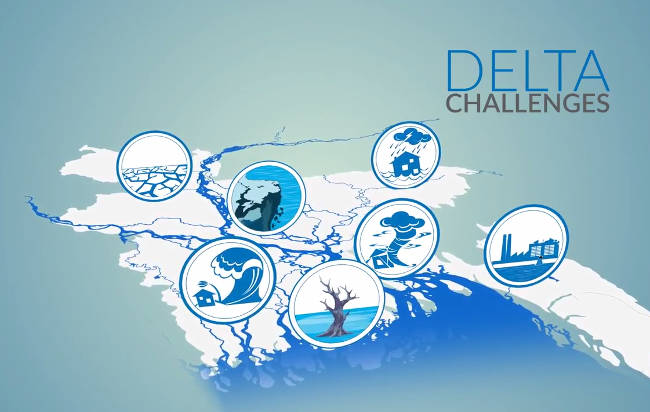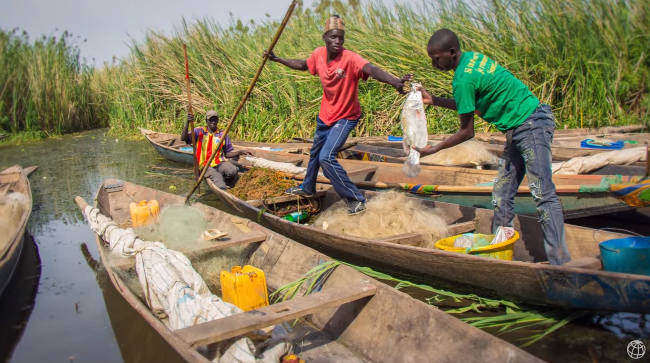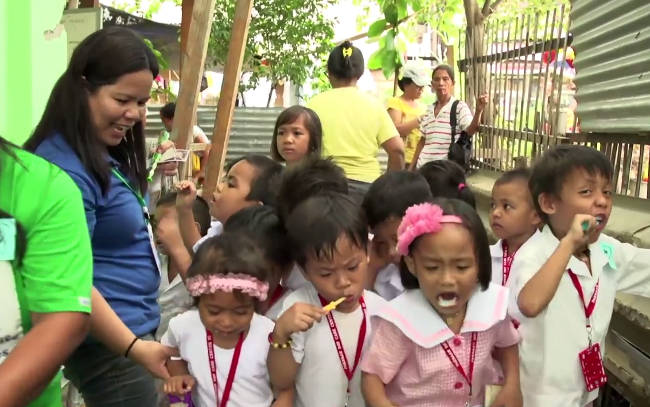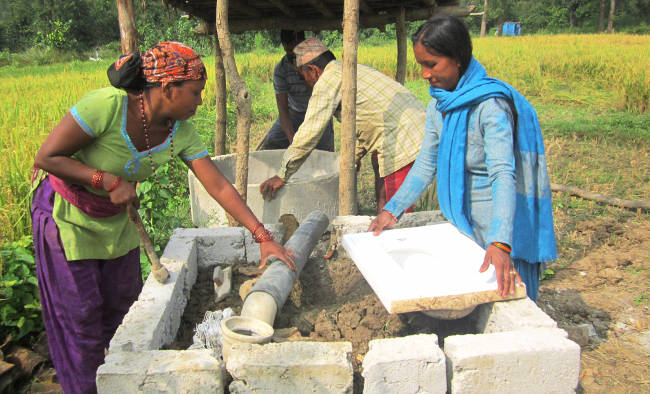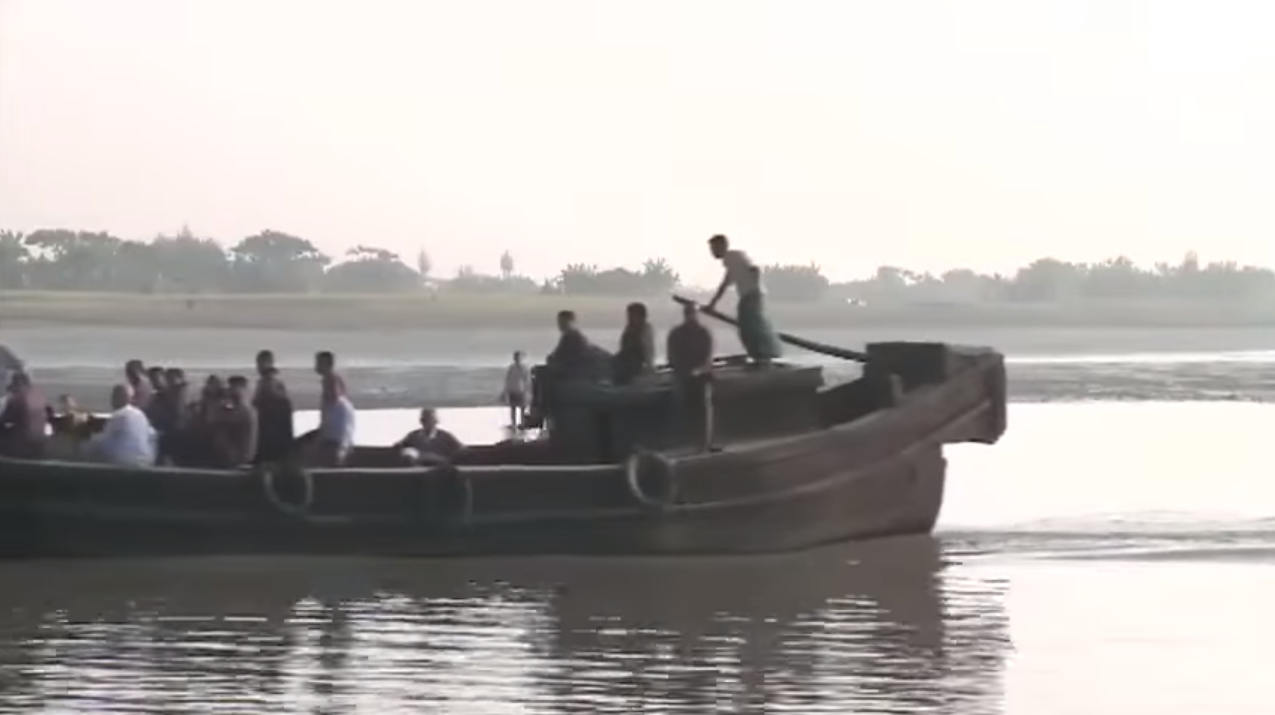Select indicator
 Efficient water use in agriculture
Efficient water use in agriculture
The Netherlands supports farmers in using water more efficiently, raising crop yields for each m3 of water consumed and improving climate resilience.
Average yields of maize per m³ water consumed in six partner countries
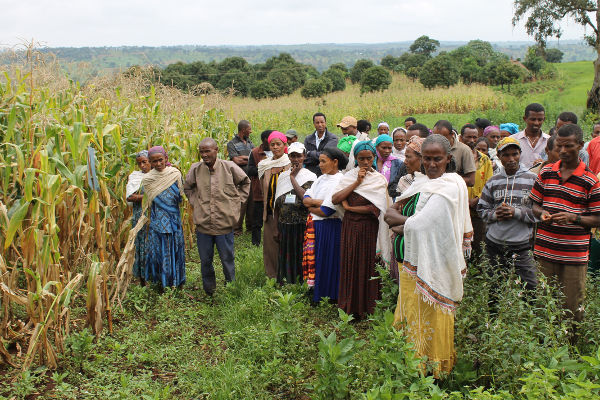
For more information visit Water Productivity Open-access portal or read more about Flying sensors - futurewater.
What does this indicator mean?
Agriculture is by far the biggest water user and accounts for 70% of global water withdrawal. Due to growing populations, increasing urbanisation and economic development, fresh water is becoming increasingly scarce. Consequently, there is an urgent need for farmers to use water more efficiently. The Netherlands aims to increase water productivity (crop yield per unit of water) by 25% by 2017, compared to the baseline of 2009. Water productivity is calculated based on statistical information from the United Nations' Food and Agriculture Organisation (FAO) for a single main crop (maize) in six partner countries. The best available information based on current statistics is for the year 2015. In order to assess water productivity accurately, the Netherlands supports the FAO in developing a database based on remote sensing data. It is expected that this database will become operational in 2017. This database will make it possible to present more accurate data for more crops and countries.
What does the result mean?
No statistical information is available for the year 2016. For the period 2009-2015, statistical data show that the average yield of maize in the six target countries (Ethiopia, Mozambique, Palestine Territories, Rwanda, South Sudan and Yemen) increased by 18%. This is a step in the right direction in view of the target for 2017, when the objective is to achieve a 25% increase in water productivity.
 Improved river basin management and safe deltas
Improved river basin management and safe deltas
The Netherlands supports water-management agencies (sub-national, national and international) and water users in planning, managing and using water wisely.
Plans for integrated river basin management and safe deltas
What does this indicator mean?
UN-Water states that around 700 million people are currently suffering from water scarcity, while floods are by far the most devastating natural disasters. In many places, people do not have good-quality water because about 80% of waste water worldwide is not treated. Water crosses political boundaries (e.g. municipalities, districts and countries) and water-resource planning needs to take place at the level of river basins. A river basin management plan addresses all issues in the basin related to both the quantity and quality of the water, and includes measures to make the best use of the water. Such a plan allocates the water to different users. It also includes measures to increase the quantity of water available to users, to preserve the quality of the water and to maintain the ecological functions of rivers. River basin management plans should be elaborated under the leadership of a river authority and with the participation of all relevant stakeholders.
What does the result mean?
In the period 2012- 2016, the Netherlands successfully supported the development of river basin management plans for 16 different river basins and deltas. This was done through organisations like the Global Water Partnership and the World Bank's Water Partnership Programme , which are multi-donor programmes. The Netherlands calculates the number of plans it has supported based on its funding share to said organisations. In 2016, a major result was the submission of the Bangladesh Delta Plan by consultants to the government of Bangladesh.
 Improved river basin management and safe deltas
Improved river basin management and safe deltas
The Netherlands supports water-management agencies (sub-national, national and international) and water users in planning, managing and using water wisely.
Beneficiaries of improved river basin management and safe deltas
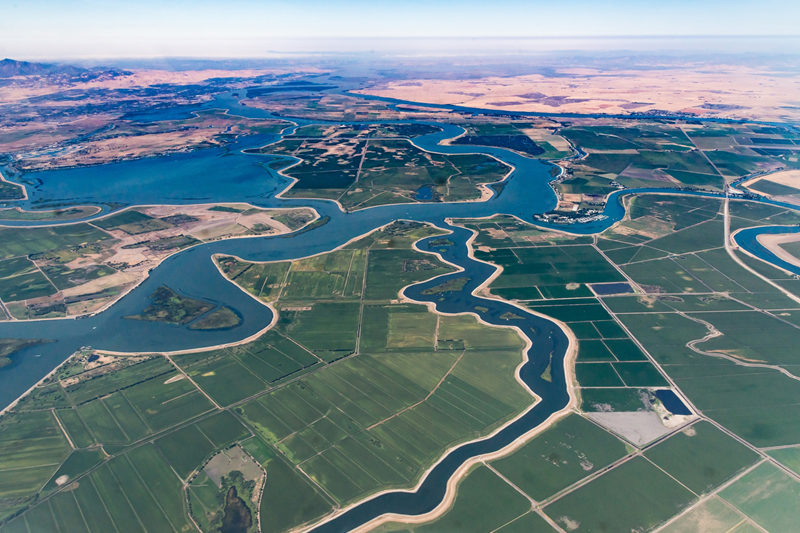
What does this indicator mean?
Besides the river basin plans (indicator 1), the Netherlands also supports projects that improve the quantity and/or quality of water for different users in river basins. These are projects that work on irrigation, drainage and flood protection, for example. Projects for the protection of water resources through land management and the protection of forests, for example, are also included. The indicator measures the number of people that has directly benefited from the different water management projects financed by the Netherlands. Improved water security makes people more resilient to the effects of climate change. For this reason, this indicator is also reported under climate.
What does the result mean?
In 2016, almost 10 million people in Asia and Africa directly benefited from Dutch-supported projects to improve the quantity and/or quality of water. These beneficiaries gained access to improved irrigation and drainage systems, were protected against floods and lived in better-protected watersheds. In 2016, noteworthy results of the bilateral programmes were the protection against flooding of 2.9 million people in Mali, 0.41 million people in Bangladesh and 0.15 million people in Indonesia. Furthermore, 5.8 million people received better protection against floods through various programmes supported by the Asian Development Bank. Almost 2 million people gained better access to irrigation and drainage systems via projects supported by the World Bank and Asian Development Bank.
 Improved river basin management and safe deltas
Improved river basin management and safe deltas
The Netherlands supports water-management agencies (sub-national, national and international) and water users in planning, managing and using water wisely.
Transboundary water management organisations supported
What does this indicator mean?
Worldwide, around 272 river basins cross the political boundaries of two or more countries and are home to about 40% of the world population. However, roughly two-thirds of these rivers do not have a co-operative management agreement. This is a potential source of conflict. Improved transboundary water management creates benefits for everyone to share, like economic growth, international trade, food and energy security and regional integration and stability. The Netherlands supports transboundary river basin organisations with training and funding, enabling them to execute their mandates. Depending on the situation, the functions of a transboundary river basin organisation are increasingly complex, from the lowest level (information sharing) via the intermediate level (shared vision) to the highest level (joint climate-proof water infrastructure development and exploitation).
What does the result mean?
In 2016, the Netherlands continued to support co-operation in 11 transboundary river basins, which provide livelihoods for 400 million people in 38 countries. This support aims to strengthen transboundary water management organisations. Projects in the area of transboundary water management vary in nature and it is not possible to define a uniform result for all of them. For this reason, we present two examples for the year 2016. Example 1: the World Bank’s Co-operation in International Waters in Africa programme reported that, in the Niger, Nile and Zambezi basins, more than 10 million people benefited from projects for flood control, power generation, irrigated agriculture, ecosystem services and drinking water supply, contributing to climate-compatible development. Example 2: IHE Delft provided training to four international river basin organisations on the Incomati, Nile, Mekong and Zambezi rivers.
 Water, sanitation and hygiene
Water, sanitation and hygiene
Improved access to water, sanitation and hygiene is a human right. It contributes to better health, dignified lives and gender equality, and is key to achieving other development goals.
Sustainable access to and use of improved water sources
What does this indicator mean?
Lack of access to safe water is associated with poor health. In 2015, 844 million people worldwide still lacked access to safe water. Small children are particularly at risk from waterborne diseases. Women and girls bear the burden of lack of access to water, as they are often tasked with collecting water.
What does the result mean?
A new Dutch WASH strategy was developed in 2016. It has a broader focus than previous strategies, for example introducing new ways of financing investments in the WASH sector. This was needed to reach the ambitious Sustainable Development Goal no. 6. A new Dutch target for improving access to drinking water has also been set: by 2030, Dutch-funded programmes will provide 30 million people with access to safe drinking water. Good progress was made during 2016, when 2.8 million people gained access to safe drinking water through Dutch-funded programmes. Collaboration between Dutch and local water companies has become a key approach in improving urban water supply. It leads to more effective local water companies, reductions in water losses and increased access to water in low-income areas.
 Water, sanitation and hygiene
Water, sanitation and hygiene
Improved access to water, sanitation and hygiene is a human right. It contributes to better health, dignified lives and gender equality, and is key to achieving other development goals.
Sustainable access to and use of improved sanitation
What does this indicator mean?
Lack of access to a hygienic form of sanitation at home, school or work leads to poor health and is also associated with loss of productive days, limitation of school attendance, particularly for girls during menstruation, and high medical costs for households. In 2015, 2.3 billion people still lacked access to a basic hygienic form of sanitation and more than 800 million people still openly defecated.
What does the result mean?
Dutch funded partners like The Wash Alliance, PLAN, BRAC, MAX-foundation, Water Supply and Sanitation Collaborative Council (WSSCC) and UNICEF have contributed to reaching 2.4 million people, mainly in Africa and Asia with improved sanitation in 2016. This is a major step towards the goal of reaching 50 million people by 2030 and it surpasses the target which was set for 2016 of 1.5 million people. The cost effective Community Led Total Sanitation (CLTS) approach, which focusses on promoting hygienic behaviour and leads to investments by households in a hygienic latrine, is widely used and helps to reach a critical mass to end open defecation. In 2016 15.000 communities supported by Dutch funded programmes were declared open defecation free, which means that hygienic sanitation, including handwashing facility, is available and being used. This reduces the risk of diseases like cholera.
 Water, sanitation and hygiene
Water, sanitation and hygiene
Improved access to water, sanitation and hygiene is a human right. It contributes to better health, dignified lives and gender equality, and is key to achieving other development goals.
Access to sanitation for women and girls

Credit foto: Unicef
What does this indicator mean?
Lack of sanitation at home or at school provides disproportional challenges for women and girls. Because there is no dignified place to relieve themselves, women often hold their urine for prolonged periods, which can be a serious health risk. Defecating in the open far away from home, often after dark, also poses risks for sexual harassment. Without proper facilities, it is also difficult to maintain hygiene during menstruation, which also poses health risks and leads to school absenteeism.
What does the result mean?
In 2016, Dutch-funded programmes provided 1.2 million women and girls with improved sanitation at home. This contributes to their health, dignity and safety. School attendance improves when there are separate latrines for girls. In 2016, 25,000 girls benefited from new latrines in schools via Dutch-funded programmes, mainly in Africa and countries like Bangladesh in Asia. Read Suisaya's story.
 Dutch water sector involvement
Dutch water sector involvement
The Netherlands has highly respected knowledge on water safety and security in developing countries and aims to make this knowledge available through local partnerships.
Dutch water sector partners involved in water programmes
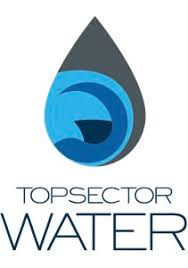
What does this indicator mean?
The Netherlands has bilateral water programmes in 11 (of the 15) partner countries. Of these 11 water programmes, six are in so-called transitional countries, in which aid will be gradually phased out with trade and investments taking over. Trade and investment in water and food become even more important when aid is phased out. The Netherlands has a strong reputation in the field of water and the long-term involvement of the Dutch water sector in the bilateral water programmes provides a sound basis for more commercial involvement. To measure the extent of Dutch water sector involvement in the different countries, we counted the total number of Dutch actors (public, private, knowledge institutes and NGOs) contracted in our programmes.
What does the result mean?
The number of Dutch partners (NGOs, knowledge institutions, companies, water boards and drinking water companies) involved in the ministry's water projects has grown rapidly in recent years. This is mainly due to the increasing number of public-private partnerships that are supported, as well as the programmes that support delta development. Programmes like the Sustainable Water Fund, Geodata for Agriculture and Water (G4AW), Securing Water for Food, Young Experts Programme and Aqua for All engage a total of 195 Dutch partners. This is a considerable increase compared to 2013 (89 Dutch partners) and 2010 (16 Dutch partners). In 2016, the breakdown of these partners was: 91 private companies, 58 NGOs, 28 knowledge institutes, 12 water boards and 6 drinking water companies.
 Dutch water sector involvement
Dutch water sector involvement
The Netherlands has highly respected knowledge on water safety and security in developing countries and aims to make this knowledge available through local partnerships.
Dutch companies involved in water programmes

What does this indicator mean?
The Netherlands aims to increase the role of the private sector in development programmes. For this indicator, we counted the number of Dutch companies that have contracts with either the ministry or one of our partners responsible for the implementation of the water programme.
What does the result mean?
In 2016, the number of Dutch companies contracted via our programmes increased by 23%, from 74 to 91. The target for 2017 of 40 companies has already been surpassed by almost 100%.





